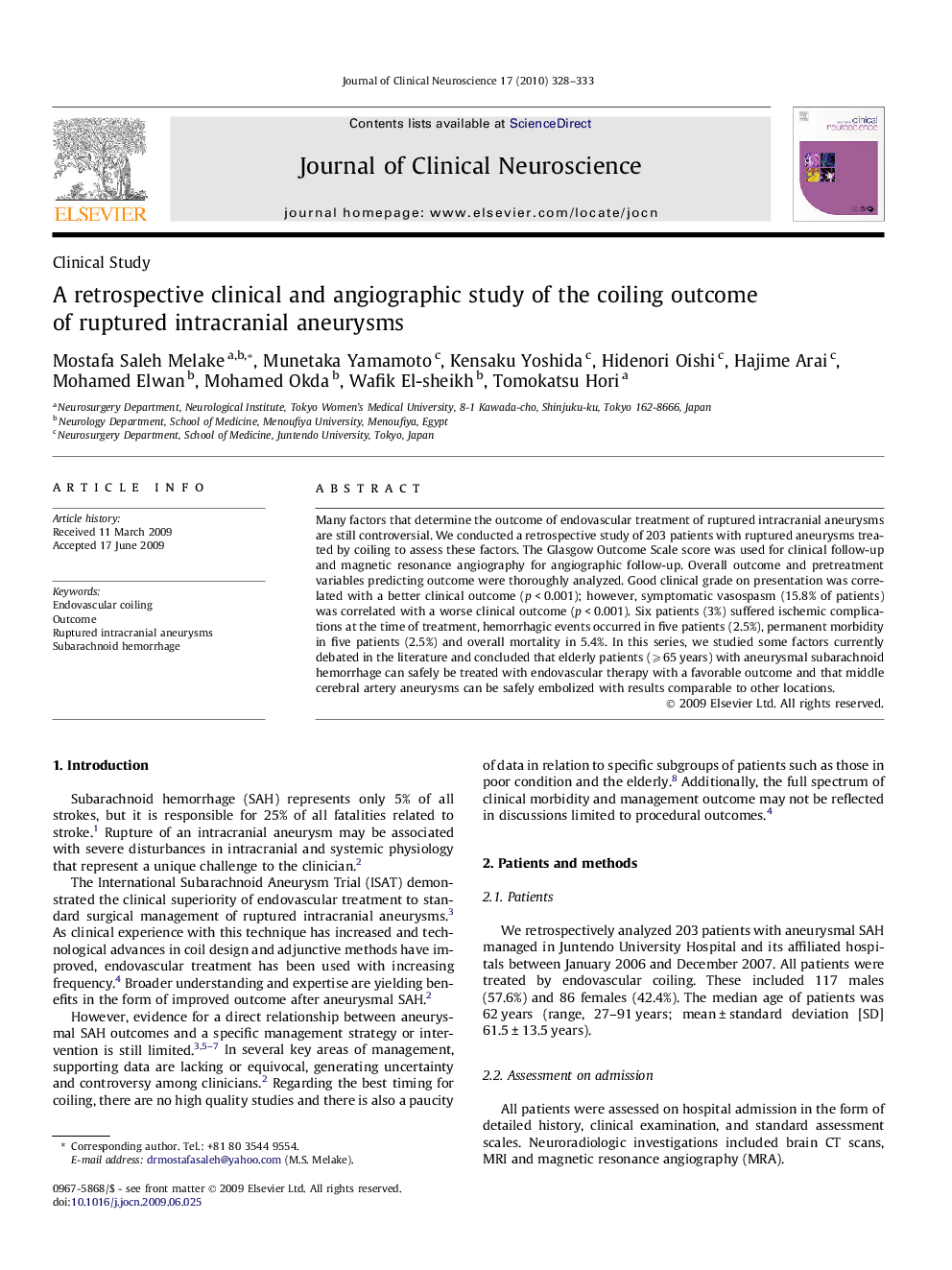| Article ID | Journal | Published Year | Pages | File Type |
|---|---|---|---|---|
| 3061745 | Journal of Clinical Neuroscience | 2010 | 6 Pages |
Many factors that determine the outcome of endovascular treatment of ruptured intracranial aneurysms are still controversial. We conducted a retrospective study of 203 patients with ruptured aneurysms treated by coiling to assess these factors. The Glasgow Outcome Scale score was used for clinical follow-up and magnetic resonance angiography for angiographic follow-up. Overall outcome and pretreatment variables predicting outcome were thoroughly analyzed. Good clinical grade on presentation was correlated with a better clinical outcome (p < 0.001); however, symptomatic vasospasm (15.8% of patients) was correlated with a worse clinical outcome (p < 0.001). Six patients (3%) suffered ischemic complications at the time of treatment, hemorrhagic events occurred in five patients (2.5%), permanent morbidity in five patients (2.5%) and overall mortality in 5.4%. In this series, we studied some factors currently debated in the literature and concluded that elderly patients (⩾65 years) with aneurysmal subarachnoid hemorrhage can safely be treated with endovascular therapy with a favorable outcome and that middle cerebral artery aneurysms can be safely embolized with results comparable to other locations.
